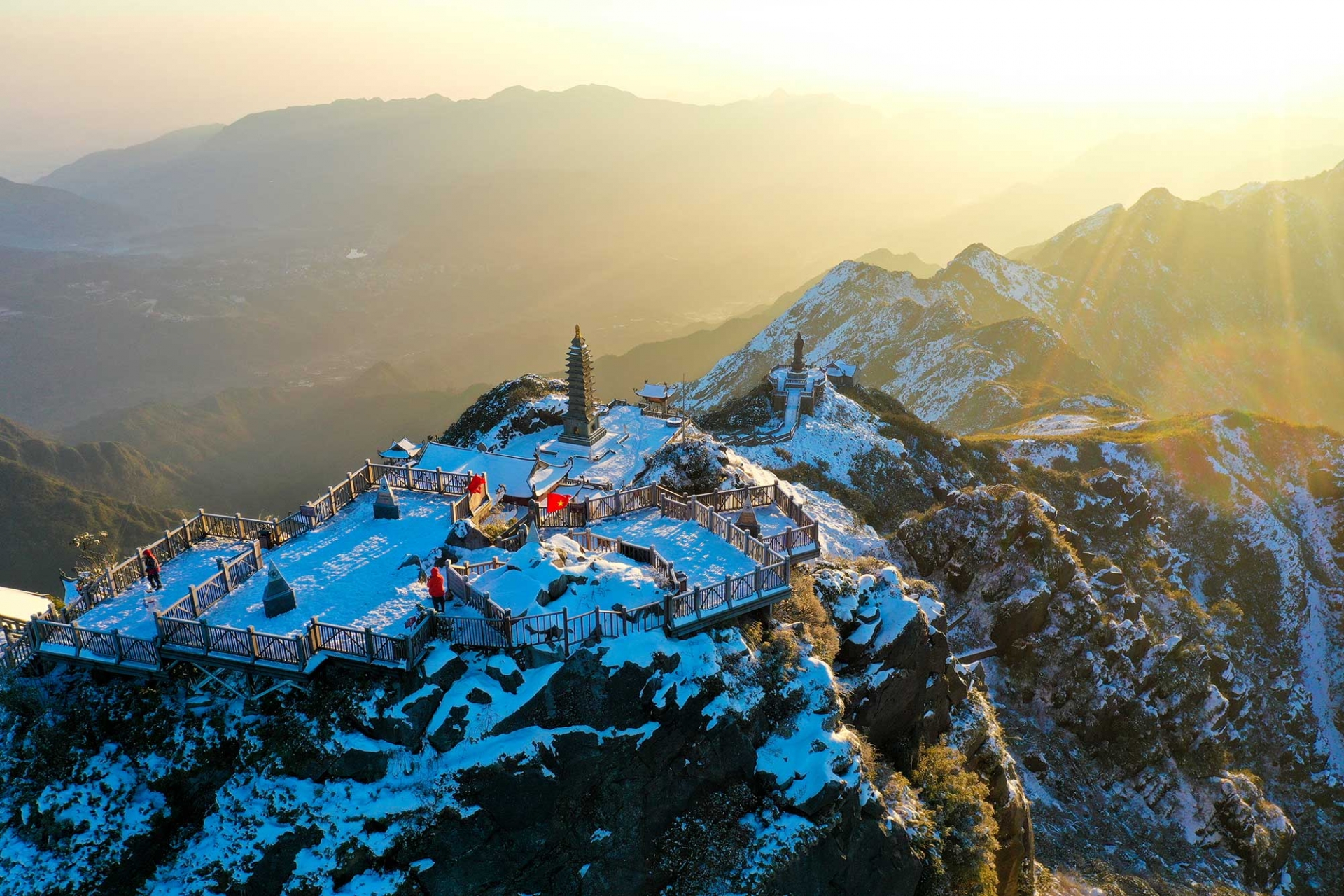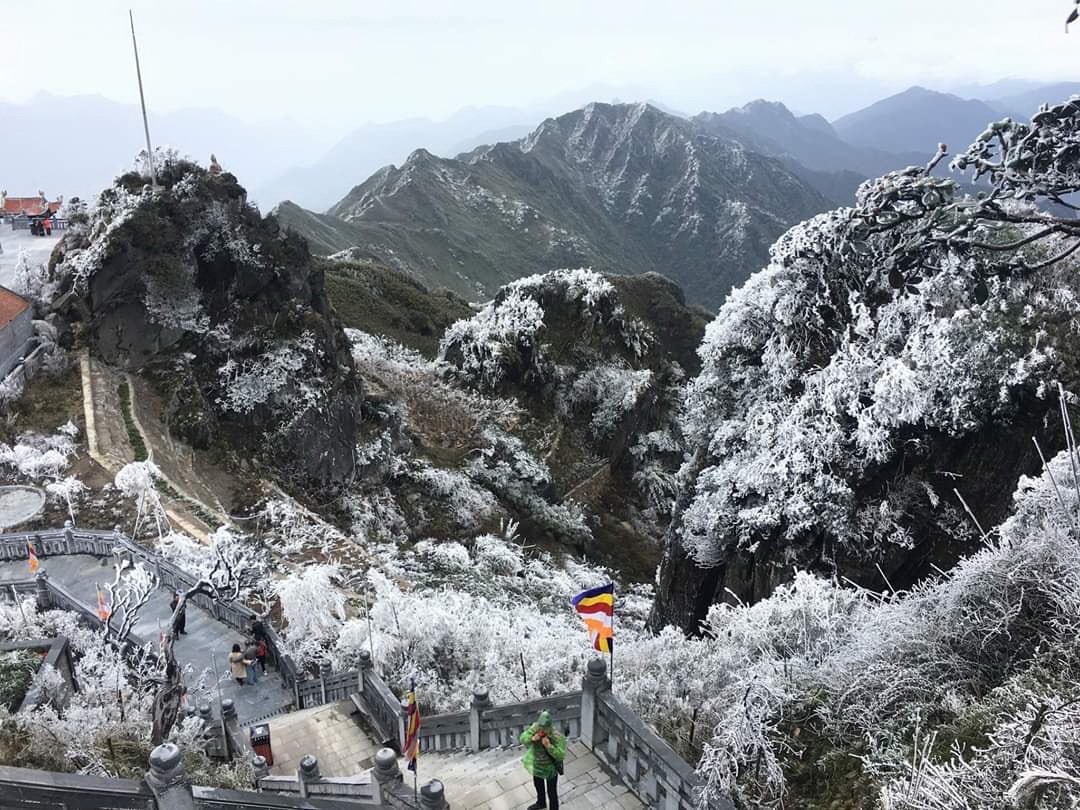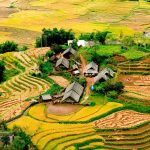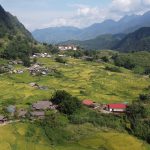6 Must-Visit Spots to See Snow in Sapa This Winter: A Complete Guide
By Nam Nguyen
Post Views: 21
6 Must-Visit Spots to See Snow in Sapa This Winter: A Complete Guide
When you think of Vietnam, you probably imagine sizzling street food, lush rice terraces, and tropical vibes.
But guess what? Vietnam has a frosty trick or two up its sleeve! Welcome to Sapa, a mountain town that swaps palm trees for powdery snowflakes in the winter.
Nestled in the jaw-dropping Hoang Lien Son Mountains of Northwest Vietnam, Sapa turns into the postcard-worthy winter wonderland you wouldn’t expect from a country known for its warm, humid weather.
If you’re ready to trade your flip-flops for snow boots and see a whole new side of Vietnam, you’re in for a treat.
This guide will cover everything you need to know about Sapa this winter—where to find snow, what to do, and why Lazy Cat are the coolest way to experience it (pun intended, of course).

What to Expect During Winter in Sapa
Temperature and Conditions
- Average Temperature: 3–7°C
- Coldest Months: December and January
- Conditions: Expect a mix of crisp, sunny days and foggy, overcast weather. Occasionally, you’ll encounter snowfall in higher-altitude areas.
What to Know: The cold, dry air can feel more intense than the temperature suggests, especially at night.
When Does Winter in Sapa Happen?
Winter in Sapa typically lasts from December to February, with temperatures ranging between 0°C and 10°C.
Snowfall is rare in Vietnam, but in Sapa, it can occur, especially in late December and early January when temperatures dip below freezing in higher altitudes. The average temperature during this season hovers around 3–7°C, creating a crisp, frosty atmosphere.
The cold, misty air and occasional snowfall make winter an enchanting time to visit. However, snow isn’t guaranteed, so timing and location play a crucial role if you’re hoping to witness Sapa’s magical white landscapes.
Where to See Snow in Sapa Winter
If you’re dreaming of snow-covered landscapes, here are the best spots to visit:
1. Fansipan Mountain
At 3,147 meters above sea level, and known as the “Roof of Indochina,” Fansipan Mountain is the highest peak in Southeast Asia. This makes it a prime location for snowfall.
During winter, its summit often experiences snow, providing breathtaking views of frosty peaks and white-dusted valleys.
For my fellow trek-lovers, hiking to the top is an unforgettable experience, though you can also take the Fansipan Cable Car for a quicker journey.

2. O Quy Ho Pass and Heaven Gate
This iconic, winding mountain pass is one of the coldest spots in Sapa and most reliable spots for snow in Sapa during winter.
Heaven Gate, a viewpoint at the highest point of the O Quy Ho Pass, offers a spectacular perspective of the snow-covered Hoang Lien Son Mountain Range.

3. Ham Rong mountain
Just 3 kilometers from Sapa Town, Ham Rong Mountain has panoramic views of the town and surrounding landscapes. Standing at 1,800 meters above sea level, it’s an excellent spot for light trekking and enjoying the snow.
4. Silver Waterfall
In winter, the Silver Waterfall sometimes freezes over in extreme cold, creating a breathtaking natural spectacle.
The cascading water transforms into icy sculptures, making it a must-visit during winter. Located just 12 kilometers from Sapa town, it’s an easy and rewarding trip.
5. Hoang Lien Son Mountain Range
This range, home to diverse flora and fauna, becomes especially picturesque under a blanket of snow. Treks in this region combine the beauty of untouched nature with the magic of winter.
6. Bat Xat Commune
A lesser-known but equally stunning location, Bat Xat is a great spot to enjoy a quieter, snowy escape away from the more touristy areas.

Things to Do in Sapa this Winter
1. Trekking Through Snow-Dusted Terraced Fields
Winter adds a magical touch to Sapa’s famous terraced rice fields. Trekking through these fields, you’ll not only enjoy spectacular views but also visit ethnic minority villages where you can learn about their rich cultural heritage.
2. Visit Sapa Markets
Explore vibrant local markets like the Bac Ha Market or Sapa Market on your winter trip to Sapa. Browse stalls brimming with handmade textiles, traditional crafts, and fresh produce.
P/S: These markets are also great for sampling local cuisine, like steaming bowls of pho or smoky grilled street food.
3. Warm Yourself with Sapa’s Winter Cuisine
Speaking of sampling local cuisine, winter in Sapa is perfect for savoring its warm, hearty dishes. These meals not only warm you up but also give you a taste of Sapa’s culinary heritage!
Don’t miss the famous hotpot, sticky rice grilled in bamboo, grilled pork skewers, and chestnuts sold by street vendors.
4. Experience Fansipan Cable Car
For a less strenuous adventure, take the Fansipan Cable Car up to Fansipan Mountain. The views of the surrounding landscape, frosted with snow and ice, from the cable car is simply breathtaking. Don’t forget your camera!
5. Enjoy Festivals in Sapa this Winter
Winter in Sapa coincides with Vietnam’s Lunar New Year (Tet) celebrations. This festive season is marked by colorful events such as:
- Dance Festival of the Red Dao
- Roong Pooc Festival of the Giay
- Gau Tao Festival of the Hmong
These festivals allow a glimpse into the traditions of Sapa’s ethnic minorities.

Prepare for your Adventure in Sapa this Winter
What to Pack
Packing smartly is essential for enjoying Sapa’s chilly weather. Here’s a checklist:
- Daypack: Ideal for carrying essentials during treks.
- Warm Layers: Thermal shirts, sweaters, and a heavy coat.
- Waterproof Jacket: Essential for foggy or rainy days.
- Comfortable Trekking Shoes: Preferably waterproof (Gore-Tex) with a good grip.
- Accessories: Hat, scarf, gloves, and woolly socks.
- Moisturizers and Lip Balm: Combat the dry winter air!
- Refillable Water Bottle: Stay hydrated, especially on treks. Neat trick: Store your water bottle upside down during your trek to fend off freezing.
Author’s Tip: Pack easily removable layers since restaurants and indoor spaces are often heated.
Tips for Winter Travel
- Book in Advance: Winter is a popular time to visit Sapa, so secure your accommodation and tours early.
- Check the Weather: Stay updated on snow conditions for the best chance of seeing Sapa’s winter wonderland.
- Dress Modestly: When visiting ethnic villages or sacred sites, ensure your clothing is respectful of local customs.
How to Get to Sapa this Winter
The easiest way to reach Sapa this winter from Hanoi is via:
- By Night Train: An 8-hour overnight journey with sleeper cabins for a comfortable ride from Hanoi to Lao Cai Station. From Lao Cai, a 45-minute bus or taxi ride will take you to Sapa.
- By Bus: Direct buses from Hanoi to Sapa are quicker, taking about 6–8 hours. Comfortable sleeper buses are available for night travel.
- By Private Car or Taxi: Ideal for groups or those seeking a faster, door-to-door journey.
Once in Sapa, local taxis and motorbikes can take you to nearby attractions, homestays, and trekking starting points.

Final Thoughts on Winter in Sapa
Sapa this winter will be the snowy Vietnamese wonderland you didn’t realise you needed!
It promises a mix of snow-topped landscapes, rich culture, and adventures that’ll make you forget you’re in a country better known for beaches and banh mi.
Whether you’re trekking through villages blanketed in frost, slurping a steaming bowl of pho while it snows outside, or snapping photos of mountains that look like they’ve been dusted with powdered sugar, Sapa serves up winter magic like no other.
So, are you ready to chill (literally) in Sapa? Pack your layers, grab your camera, and let Lazy Cat help you tackle the frosty fun.
Snow doubt about it—Sapa’s winter wonderland is calling!


